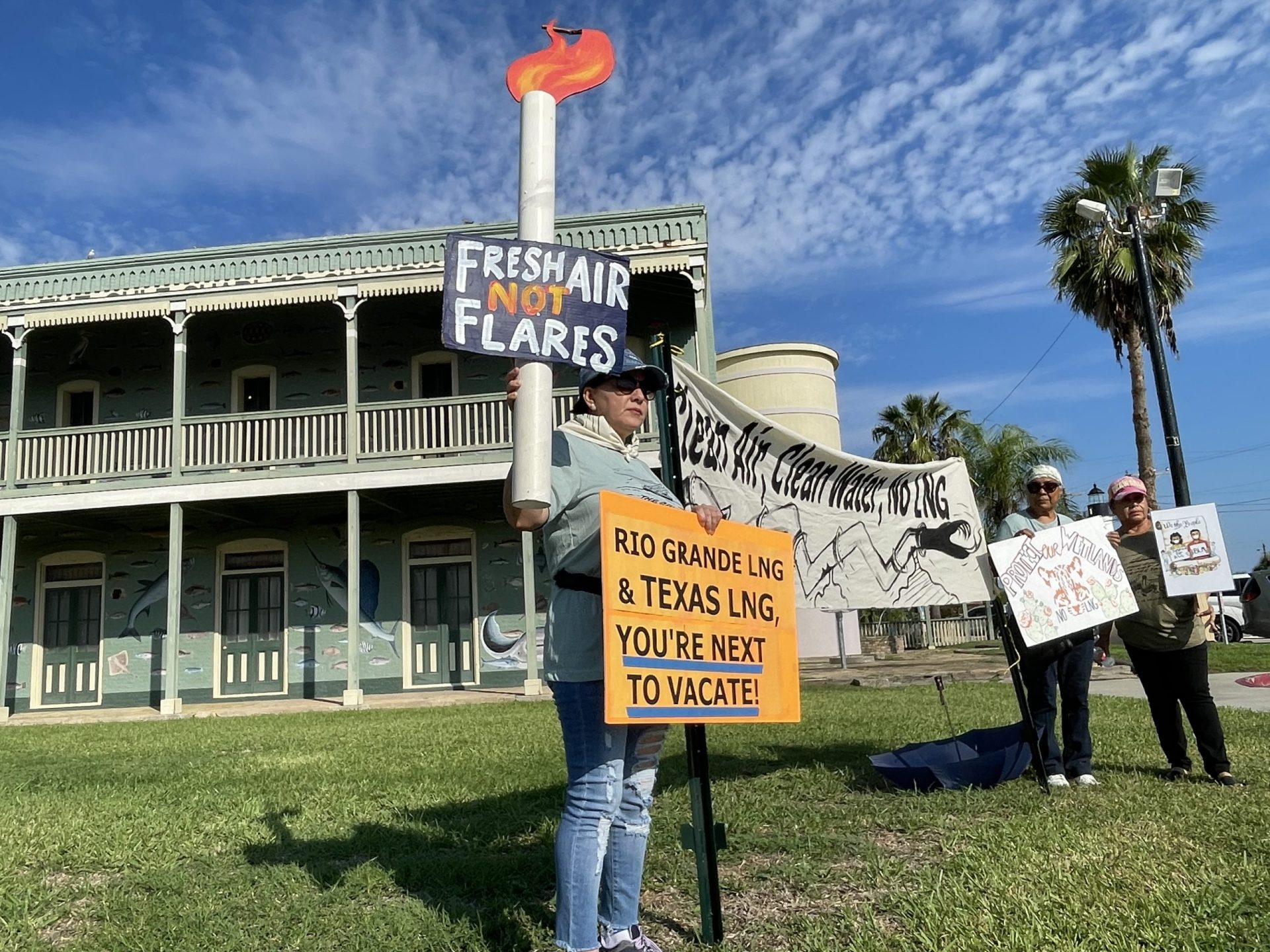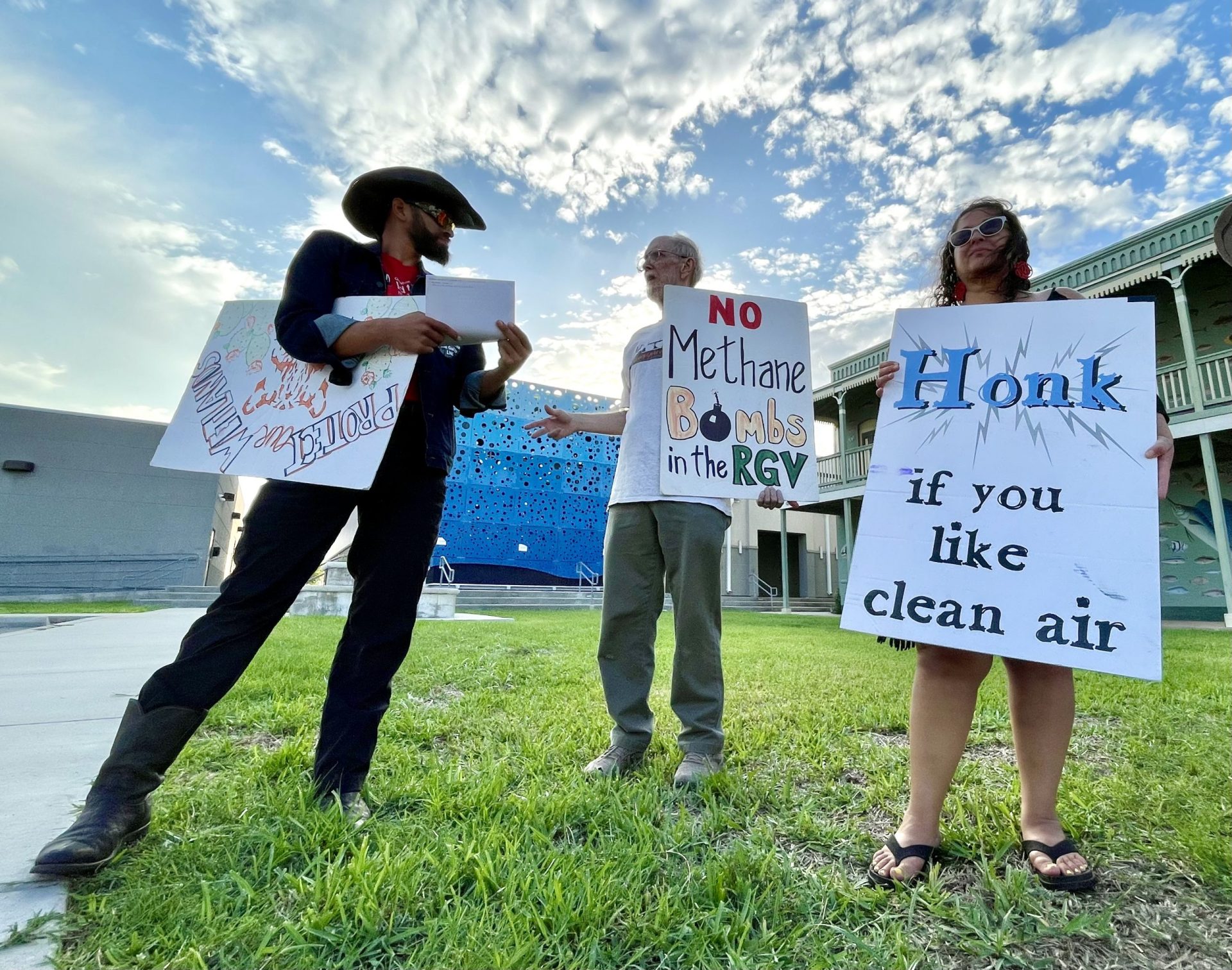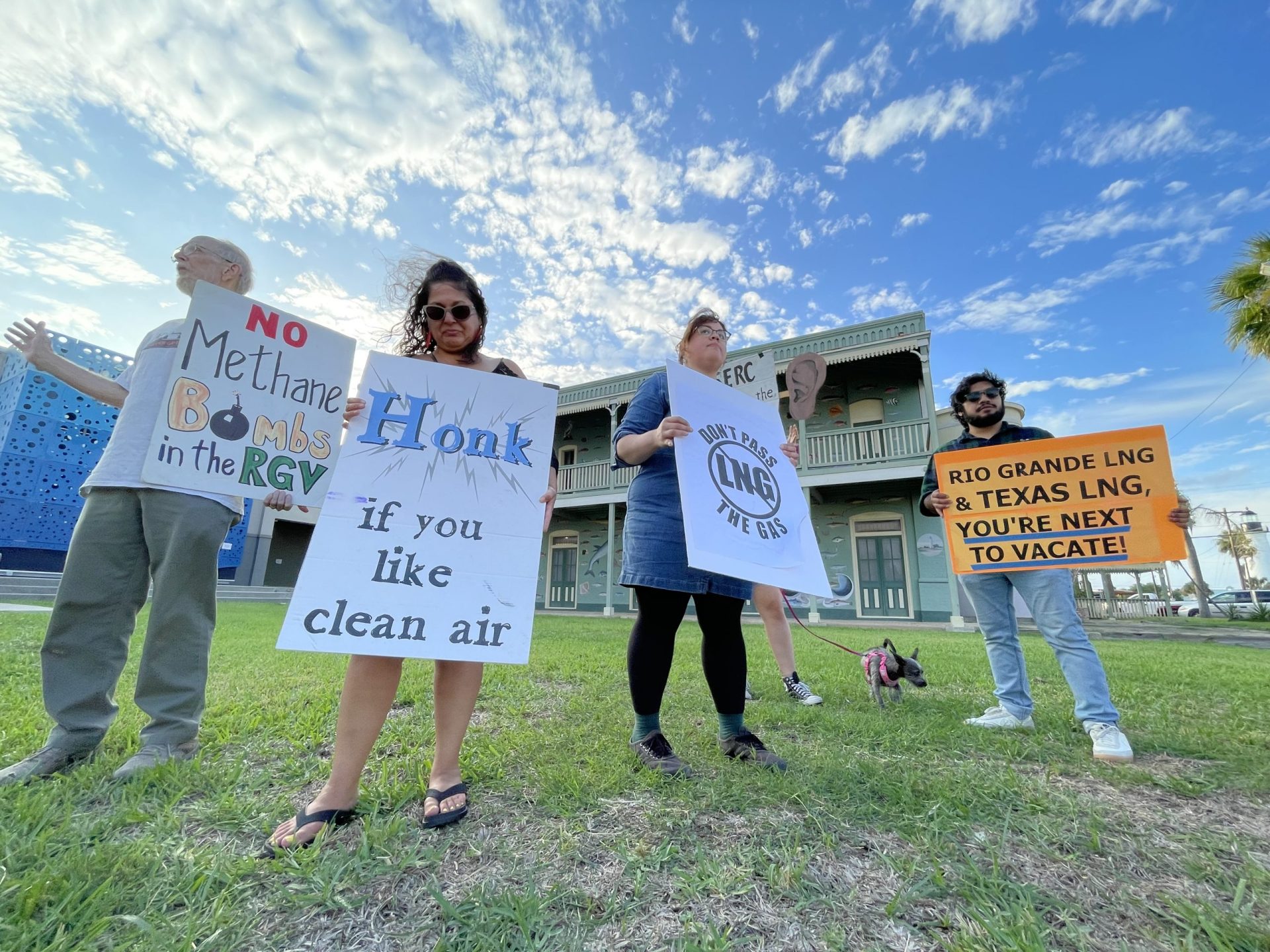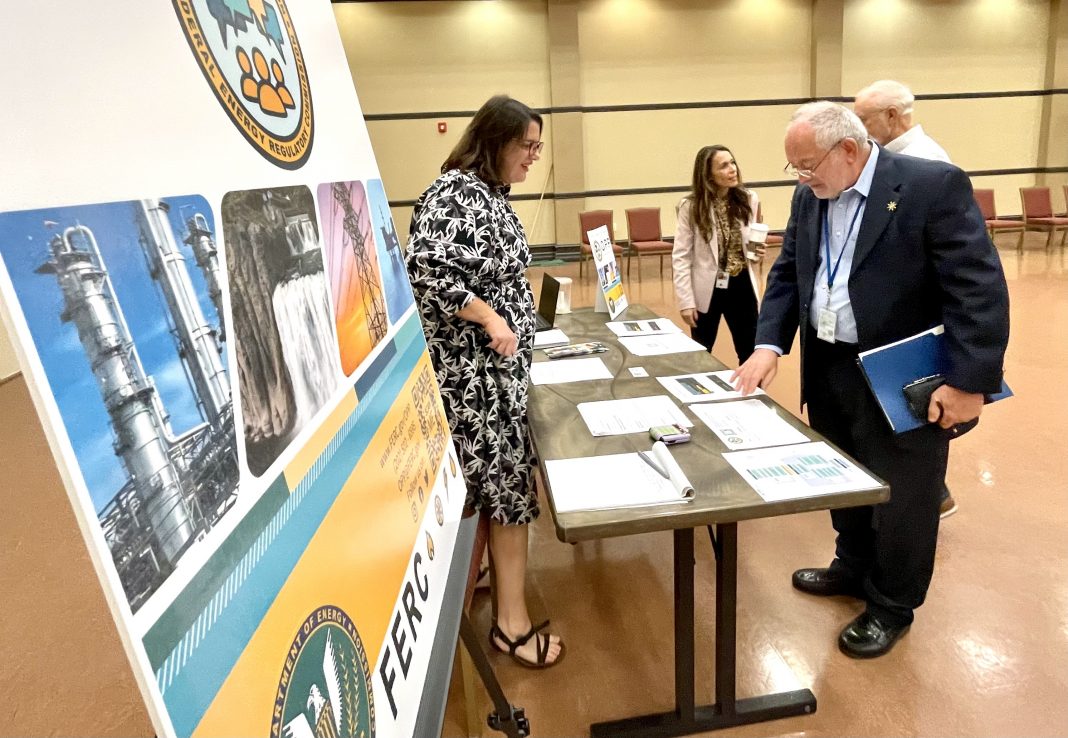PORT ISABEL — Rio Grande LNG, the Houston-based liquefied natural gas company, continues to lay the groundwork for the LNG export terminal it hopes to build at the Port of Brownsville.
To that end, the Federal Energy Regulatory Commission invited members of the public to provide input on the latest phase of Rio Grande LNG’s project — obtaining a permit that would allow the company to include carbon capture technology at the future site.
The FERC held two so-called “scoping meetings” at the Port Isabel Event and Cultural Center on Tuesday — one in the morning, and another in the evening — in order to give members of the public an opportunity to comment about the carbon capture proposal.

The comments, which were recorded one at a time via transcription, will be included in an environmental impact study that FERC will use to help determine whether to award the permit.
According to a summary of the project FERC provided, the proposed carbon capture system will allow “Rio Grande LNG to capture a minimum of 90 percent of the carbon dioxide produced” by the terminal.
The captured carbon would then be transported via pipeline to an as-yet undetermined “underground geologic formation for sequestration,” the summary reads.
Though such technology would substantially reduce the amount of carbon emissions produced by the export terminal — which is expected to produce 27 million metric tons of LNG annually — not everyone is on board with the proposal.
Along with local environmental activists, officials with the city of Port Isabel continue to oppose anything to do with LNG. The city’s opposition has remained stalwart since news of the export terminals first surfaced in late 2014.
At one point, Port Isabel City Manager Jared Hockema referred to the projects as “environmental racism.”
At the time, five companies expressed interest in building terminals along the Brownsville Ship Channel — facilities that would be among the first to supply American natural gas to the global market.
But by the time FERC held its first public information meeting in May 2015, that number had dwindled to three — Annova LNG, Texas LNG and Rio Grande LNG, whose parent company is Next Decade.

In the seven years since, Annova LNG has abandoned its plans, leaving just Texas LNG and Rio Grande LNG left in the game.
Regardless of which — or how many — companies have been trying to build terminals in the Rio Grande Valley, Port Isabel has remain staunchly opposed.
“We are resolute in our position that this is the wrong type of development for this area,” Hockema said Tuesday.
“When decisions are made to site these facilities, it seems as if they decide to site them in places where they think they can get away with it. They think that the people cannot fight back,” Hockema added, alluding to his previous characterization of the projects as “environmental racism” since the nearest terminal would be built two miles from the city itself, which lies downwind of the port.
Nor was Hockema impressed by Rio Grande LNG’s efforts to be the first LNG company in the U.S. to include carbon capture technology.
“They are trying to ‘greenwash’ a dirty facility. They’re trying to peddle this as if it’s some type of environmentally friendly facility. It is not,” he said.
Local resident Mary Volz, a member of the grassroots environmental activist group Save RGV from LNG, echoed that sentiment.
“This is a ploy to get the public to go, ‘Oh, this is better. This’ll be good.’ They’re not fooling anybody, let me just put it that way,” Volz said.
Volz added that she felt unable to make well-informed comments at the scoping meeting due to a lack of information about Rio Grande LNG’s proposal.
“There’s so little information that we have to comment on that I feel really kind of not able to give good comments because I don’t understand, really, what they’re trying to do,” Volz said.
“Except that I know this process that they’re trying to introduce is kind of ‘greenwashing’ of the project,” she said.

Despite pushback from the Laguna Madre community — from its residents to its elected officials — the LNG export terminals continue to receive warm support from Cameron County’s industrial sector.
Eduardo A. “Eddie” Campirano, CEO and director of the Port of Brownsville, has long touted the projects as a boon for the local economy.
Both he and John Wood, secretary of the Brownsville Navigation District Board of Commissioners, also attended Tuesday’s scoping meeting to leave comments reiterating the port’s support for Rio Grande LNG.
“Obviously, we’ve been working with Next Decade for quite a few years, many years, in fact, on the LNG project,” Campirano said.
“And Next Decade certainly stepped up to the plate to try to do what is necessary to impact in a positive way their facility,” he added a moment later.
Campirano lauded the energy company for working so diligently to address environmental concerns, especially as construction on the project has seen yearslong delays.
“The project has had to address many hurdles. I think they have done that — whether it’s dealing with issues that come up in the FERC process or in the public hearing process — and they’ve responded to all of those concerns,” he said.





